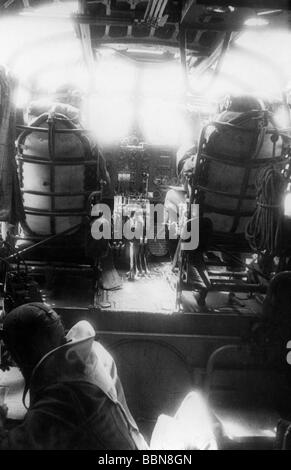

Downward visibility was also much improved thanks to the narrower lower wing. It offered improved stability, maneuverability, and climbing ability over the preceding D.II. The D.III was well regarded among pilots from its introduction despite having heavier controls. In spite of the modification pilots were advised to avoid steep or prolonged dive maneuvers. Modifications were made to the design and existing aircraft to strengthen the wing. As a result of the changeover to the sesquiplane layout, only a single spar was used in the lower wing. The eventual cause was determined to be the wing’s spar which was located too far aft. Initially this puzzled engineers and was attributed to poor workmanship during manufacturing, but in reality the lower wing was experiencing excessive flexing under aerodynamic load.
#Ww1 airplane cockpit crack
Even The Red Baron himself, Manfred von Richthofen experienced this with a crack appearing on his new D.III and was forced to make an emergency landing. The design was changed to relocate the radiator right of the cockpit.Īnother issue had to do with several lower wing failures.

Although it was well placed to avoid battle damage, it tended to scald the pilot if there was a leak or puncture in the radiator for any reason.

The first of which was the placement of the aerofoil shaped radiator above the cockpit. Several problems were discovered during the D.III’s introduction. Unlike previous designs each cylinder had a separate water jacket. In the interest of weight savings the crankcase was aluminum, whilst the separate cylinders were steel and bolted onto the crankcase. The water cooling and overhead camshaft yielded more horsepower than the radial engines that were more common, with the D.IIIa pumping out 170 hp.

The D.III utilized a water-cooled Mercedes inline 6 cylinder 4 stroke engine appropriately designated as the D.IIIa. Because of this the British coined their own nickname for the D.III: “The V-strutter.” The bracing, between the top and bottom wings was reconfigured to a “V” shape leading owing to the single spar used in the lower wings. As a result, the top wing was lengthened, and the lower wing’s chord was shortened, meaning the wing measured less from leading edge to trailing edge. A sesquiplane configuration consists of a modified biplane design with shorter and and narrower lower wings with the advantage being less drag at speed.
#Ww1 airplane cockpit skin
This fuselage design was semi-monocoque, meaning that the skin of the aircraft, which was plywood, could bear some weight and add structural rigidity.Īfter seeing the success of the French Nieuport 11 and 17, the Idflieg which was the bureau overseeing German aviation development at the time requested that the new D.III adopt a sesquiplane layout similar to the Nieuports. Design of the D.IIIĭesigned by Robert Thelen, the D.III was based off of the D.I and D.II that preceded it, utilizing the same basic fuselage. It was armed with 2 7.92mm LMG 08/16 machine guns which were an air cooled and synchronized version of Germany’s MG08. The plane helped secure German air superiority and several top German aces flew the D.III, including Manfred von Richthofen – The Red Baron. The Albatros D.III was a bi-plane fighter manufactured by Albatros Flugzeugwerke Company in the Aldershof district of Berlin, Germany.


 0 kommentar(er)
0 kommentar(er)
